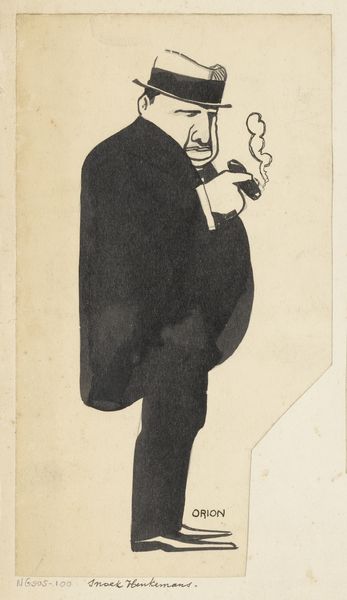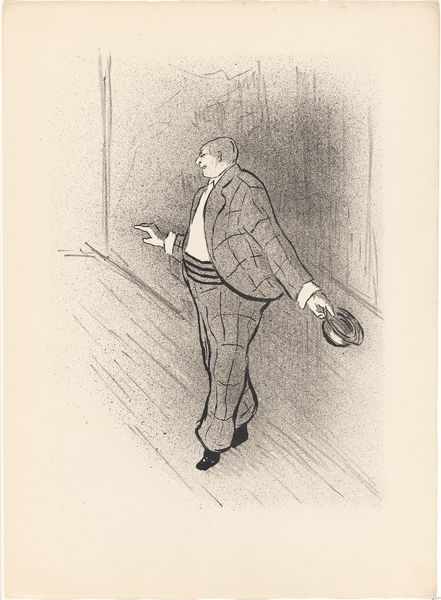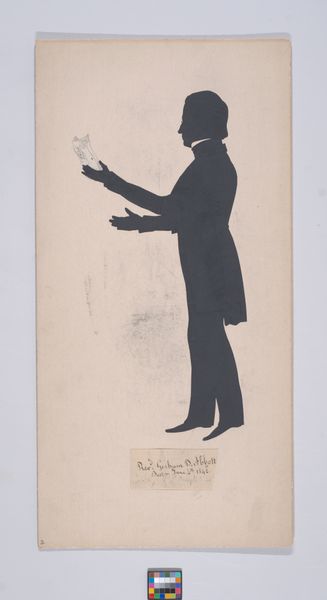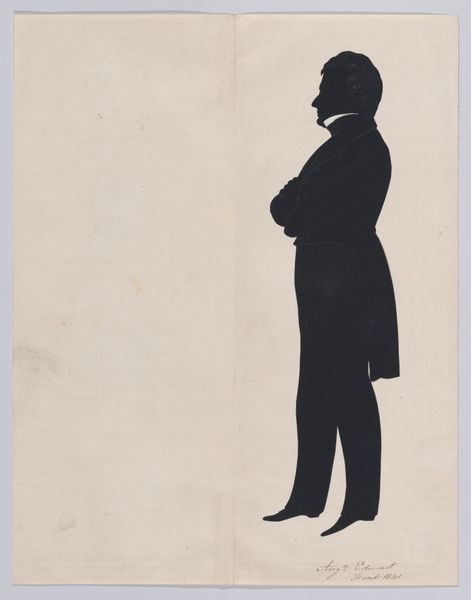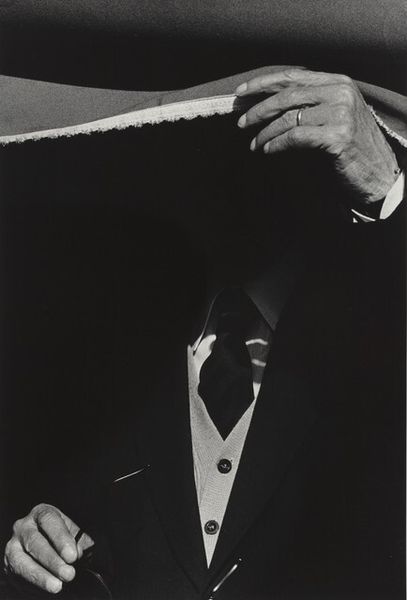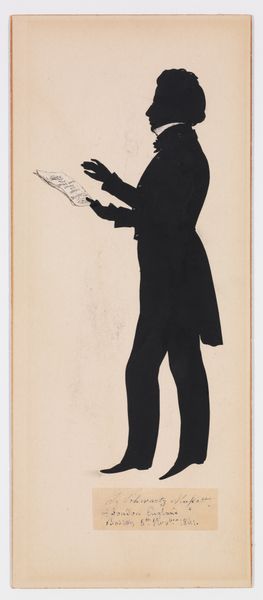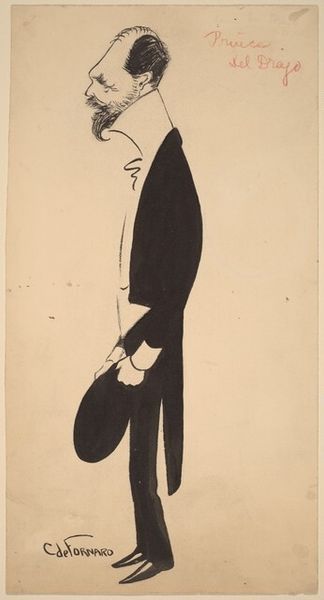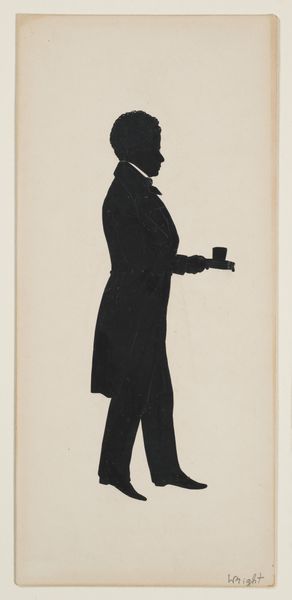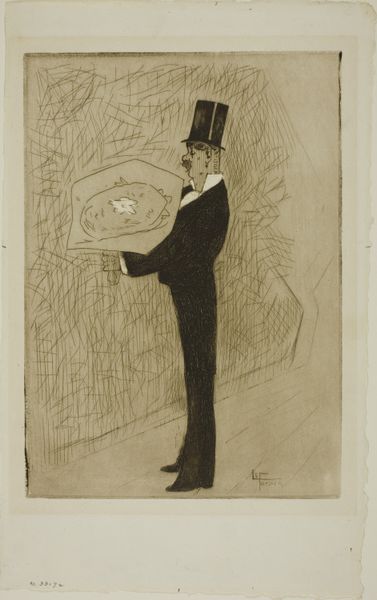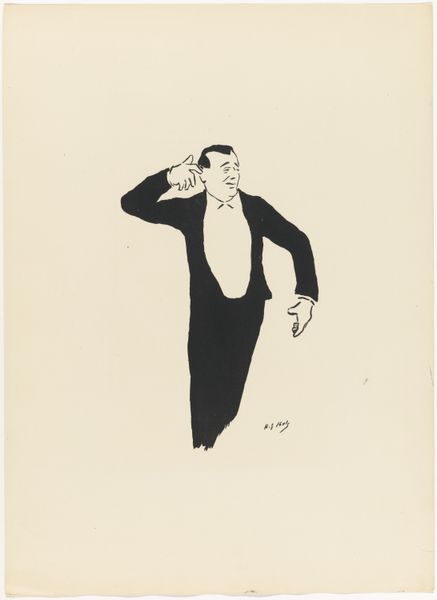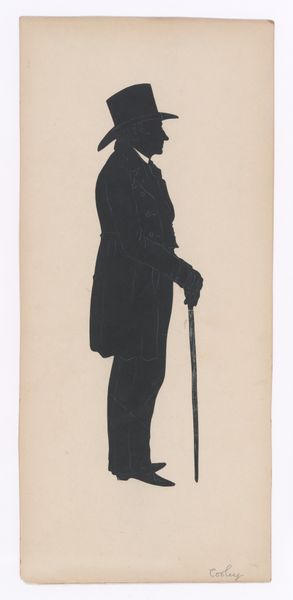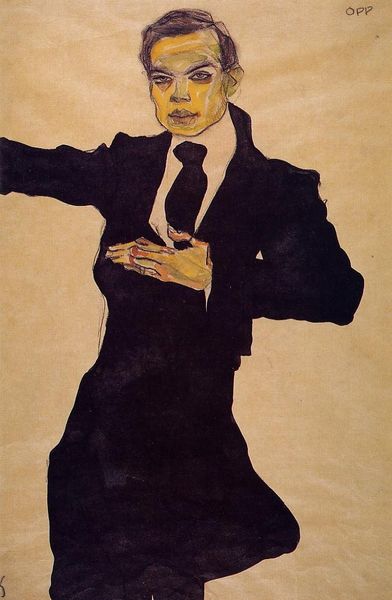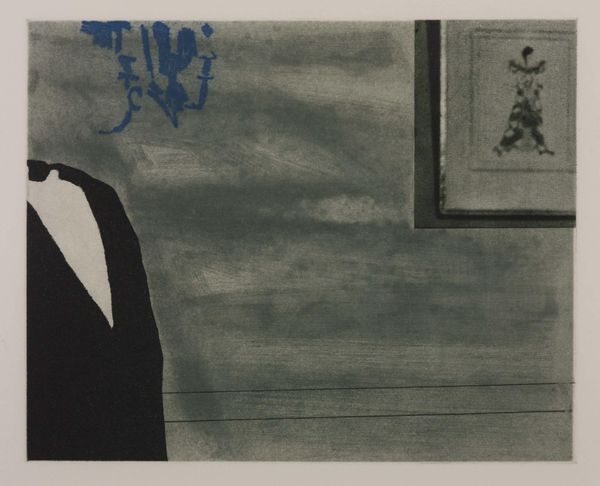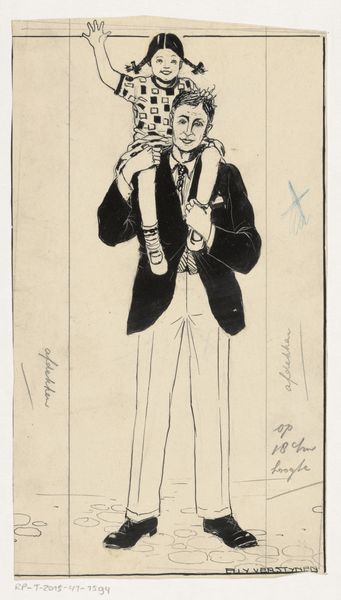
Copyright: CC0 1.0
Curator: Here we have William Nicholson's woodcut of James McNeill Whistler, a print held in the Harvard Art Museums collection. Editor: Striking! The figure emerges from stark darkness, the heavy black contrasting sharply with the beige ground, lending an air of isolation. Curator: Nicholson was known for his woodcut portraits, a relatively inexpensive means to disseminate imagery at the time. The flat planes were achieved through careful carving and inking. Editor: And this helped popularize Whistler’s image, adding to his legend as a public figure. It’s a controlled and powerful representation. Curator: Indeed. The use of woodcut demonstrates how "low" art forms like prints were being re-evaluated alongside their social function. Editor: Ultimately, Nicholson gives us a lasting glimpse of how Whistler appeared in the public imagination. Curator: For me, Nicholson makes the material qualities of the print itself become the message. Editor: And that message reverberates through artistic and social history.
Comments
No comments
Be the first to comment and join the conversation on the ultimate creative platform.
